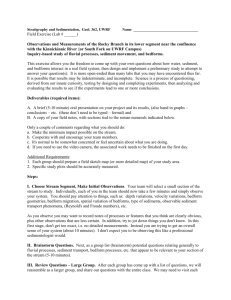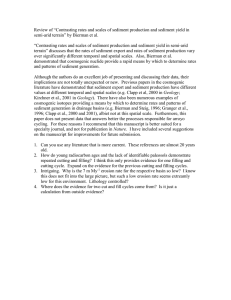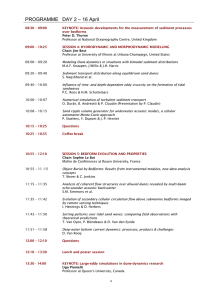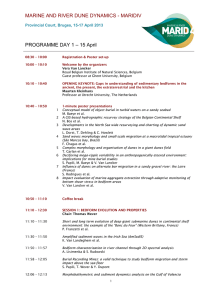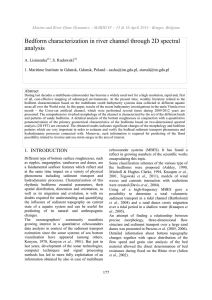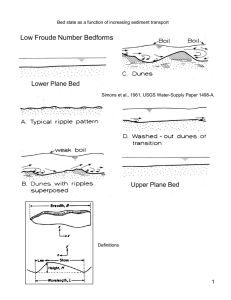Sediment transport equivalence across scales of bed form
advertisement
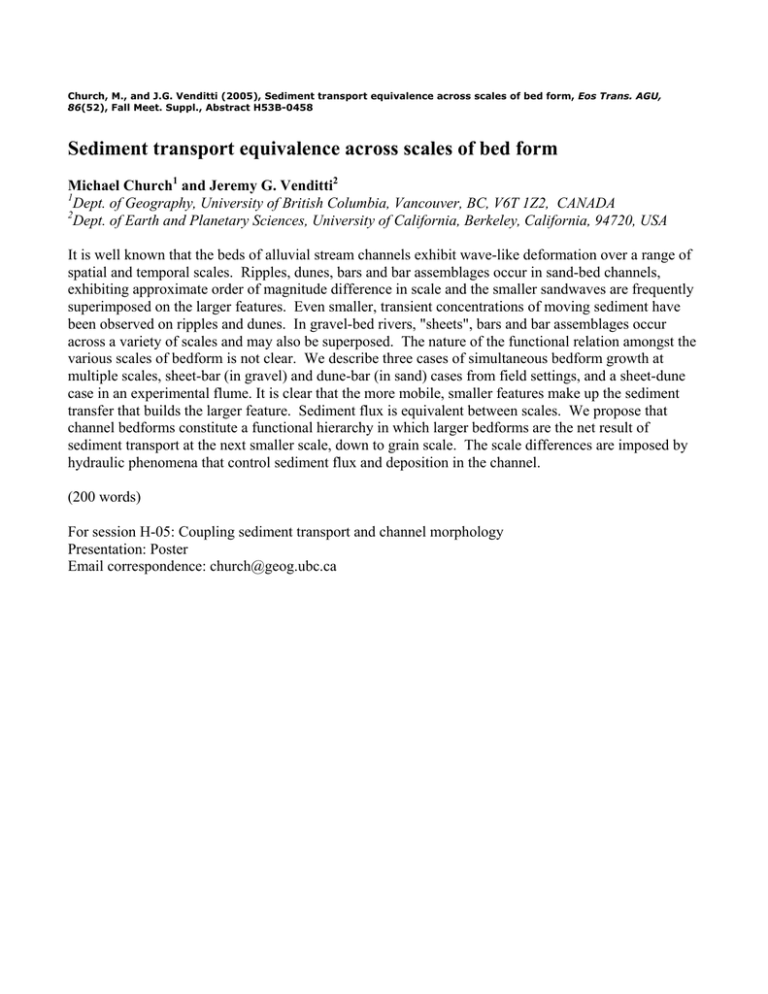
Church, M., and J.G. Venditti (2005), Sediment transport equivalence across scales of bed form, Eos Trans. AGU, 86(52), Fall Meet. Suppl., Abstract H53B-0458 Sediment transport equivalence across scales of bed form Michael Church1 and Jeremy G. Venditti2 1 Dept. of Geography, University of British Columbia, Vancouver, BC, V6T 1Z2, CANADA 2 Dept. of Earth and Planetary Sciences, University of California, Berkeley, California, 94720, USA It is well known that the beds of alluvial stream channels exhibit wave-like deformation over a range of spatial and temporal scales. Ripples, dunes, bars and bar assemblages occur in sand-bed channels, exhibiting approximate order of magnitude difference in scale and the smaller sandwaves are frequently superimposed on the larger features. Even smaller, transient concentrations of moving sediment have been observed on ripples and dunes. In gravel-bed rivers, "sheets", bars and bar assemblages occur across a variety of scales and may also be superposed. The nature of the functional relation amongst the various scales of bedform is not clear. We describe three cases of simultaneous bedform growth at multiple scales, sheet-bar (in gravel) and dune-bar (in sand) cases from field settings, and a sheet-dune case in an experimental flume. It is clear that the more mobile, smaller features make up the sediment transfer that builds the larger feature. Sediment flux is equivalent between scales. We propose that channel bedforms constitute a functional hierarchy in which larger bedforms are the net result of sediment transport at the next smaller scale, down to grain scale. The scale differences are imposed by hydraulic phenomena that control sediment flux and deposition in the channel. (200 words) For session H-05: Coupling sediment transport and channel morphology Presentation: Poster Email correspondence: church@geog.ubc.ca

